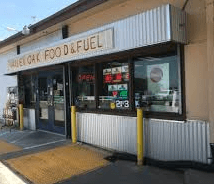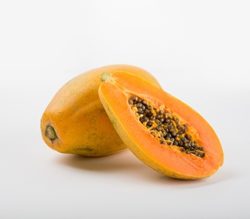Updates: Botulism in Nacho Cheese, Salmonella in Maradol Papaya, Listeria in the Environment, and Our New Trending Page
California Department of Public Health confirms that botulism outbreak was Linked to Retail Practices
 In May we reported on a Botulism outbreak resulting from the consumption of nacho cheese sauce served at the Valley Oak Food and fuel gas station in Walnut Grove, California.
In May we reported on a Botulism outbreak resulting from the consumption of nacho cheese sauce served at the Valley Oak Food and fuel gas station in Walnut Grove, California.
The outbreak included 10 cases of laboratory confirmed C. botulinum toxin type A. All patients were hospitalized and one death was reported. Customers spread the nacho cheese sauce on chips from a counter-top self-service warming dispenser.
According to a memo from the California Department of Public Health, the operators at the gas station were mainly responsible for the outbreak because the reasons for the outbreak were:
- The bag of nacho cheese (5 lb) collected at the retail location on May 5, 2017, was consumed past the “Best By” date.
- The gas station did not maintain records of the time in which the bag nacho cheese was added to the warming unit. Therefore, the cheese might have been left too long in the warmer.
- The designated tool to open the nacho cheese bag was not used to open the bag of cheese.
The CDPH Food and Drug Branch (FDB) and Sacramento County Environmental Management Department (SCEMD) guided management in such retail store regarding the use of nacho cheese warming and dispensing machines in retail locations, in order to prevent future incidents like this one in the future.
Multistate Outbreak of Salmonella Anatum Infections Linked to Imported Maradol Papayas
 The CDC reports on the newest outbreak relating to papayas from Mexico. This is the fourth investigation involving to papayas from Mexico this year.
The CDC reports on the newest outbreak relating to papayas from Mexico. This is the fourth investigation involving to papayas from Mexico this year.
On September 4, 2017, the CDC reported that 14 people in 3 states were infected with the outbreak strain of S. anatum. Five hospitalizations and one death resulted from this outbreak. Epidemiological and laboratory data indicated that papaya from Mexico imported by Bravo Produce Inc. of San Ysidro, California is the probable source of the outbreak.
On September 10, the FDA and the distributor withdrew the product from the market. The CDC pulseNet data base identified 6 more individuals with the same DNA fingerprint that recently became ill.
Environmental sampling of a plant in Germany linked to Listeria Outbreak
 With the increase in environmental sampling mandated by the FSMA, and the numerous recalls resulting from the program, I find it interesting that environmental sampling was inked to a Listeriosis outbreak in Germany.
With the increase in environmental sampling mandated by the FSMA, and the numerous recalls resulting from the program, I find it interesting that environmental sampling was inked to a Listeriosis outbreak in Germany.
A conveyor belt in a meat processing plant, moving product before packaging, was most likely the source of the contamination.
In 2015, an outbreak of Listeriosis was reported in Germany, caused by L. monocytogenes ½ a. In Emerging Infectious Diseases Volume 23, Number 10—October 2017, Molecular Tracing to Find Source of Protracted Invasive Listeriosis Outbreak, Southern Germany, 2012–2016 Kleta et al. using forensic microbiology, had identified several products from one manufacturer contaminated with the outbreak genotype Listeria.
Their conclusion was based on the facts that:
- L. monocytogenes outbreak strain was isolated from several products of the same manufacturer
- The outbreak strain was absent in other products collected during the same period
- Epidemiological findings suggested that the source of the outbreak was from this single factory
- The meat processing plant predominantly supplied grocery stores of a single company
- Patience food consumption histories were compatible with the molecular typing results
However, the authors could not prove the producer was the source of the infections. They concluded that public health could benefit from continuous molecular surveillance of isolates from humans and food, which could allow for infectious disease outbreaks to be stopped before emergence.
New Trending Page in BioExpert
 We are planning to add a new exciting page in our ask-bioexpert site. The purpose of this additional page is to introduce and discuss current trends in food safety, intriguing articles, and bring to the attention of the food safety community any new topic that might be of interest. Any registered user will be able to quickly describe any relevant trend or comment on any previously published trend descriptions.
We are planning to add a new exciting page in our ask-bioexpert site. The purpose of this additional page is to introduce and discuss current trends in food safety, intriguing articles, and bring to the attention of the food safety community any new topic that might be of interest. Any registered user will be able to quickly describe any relevant trend or comment on any previously published trend descriptions.
I am hoping that all registered users will contribute to this page thereby creating a compelling new relevant body of information and pointing readers to valuable food safety information. By your active participation, you will be able to help your colleagues to understand the most pressing trends in food safety and determine where to focus their attention.
Please look for an announcement soon.
